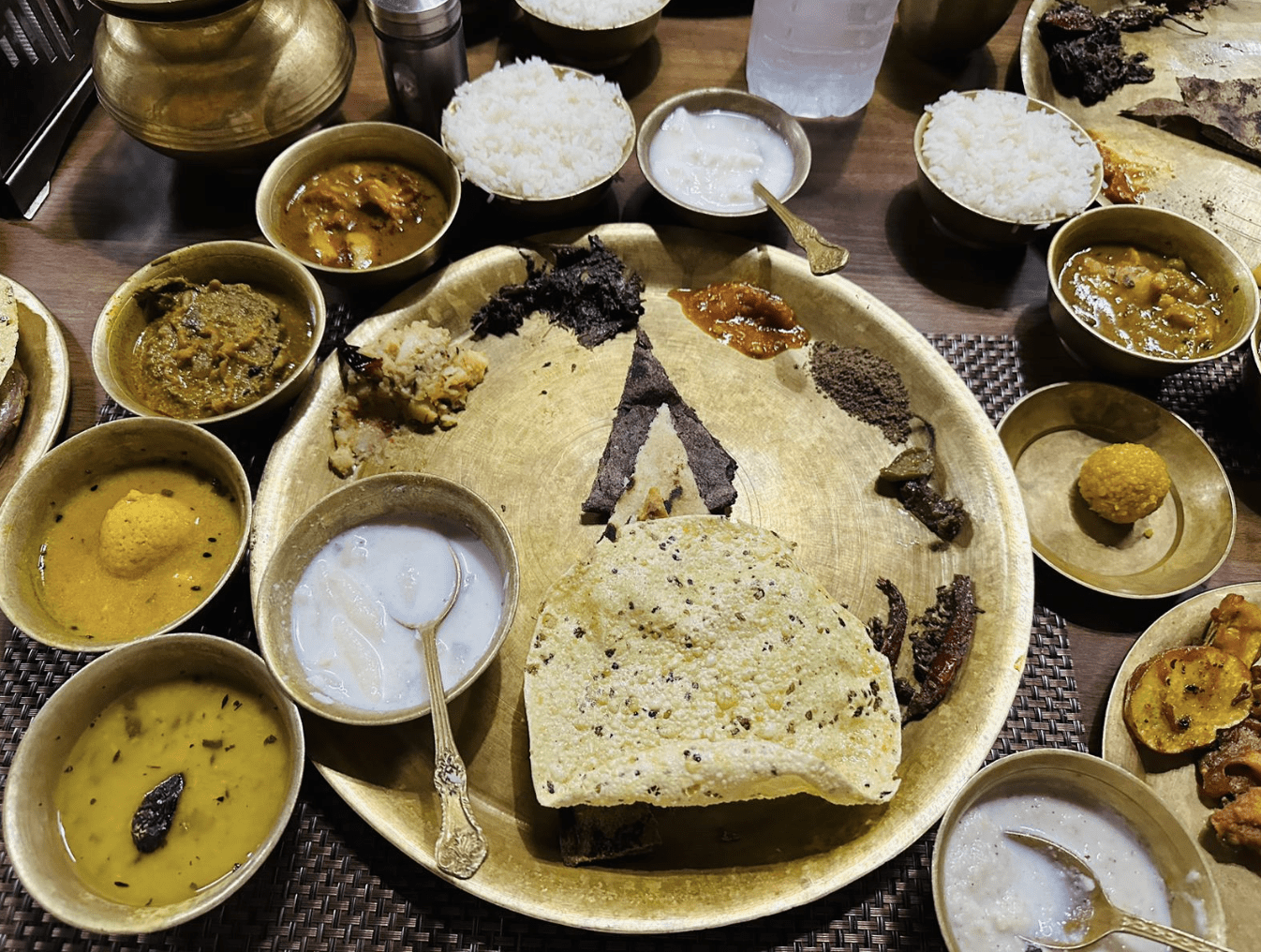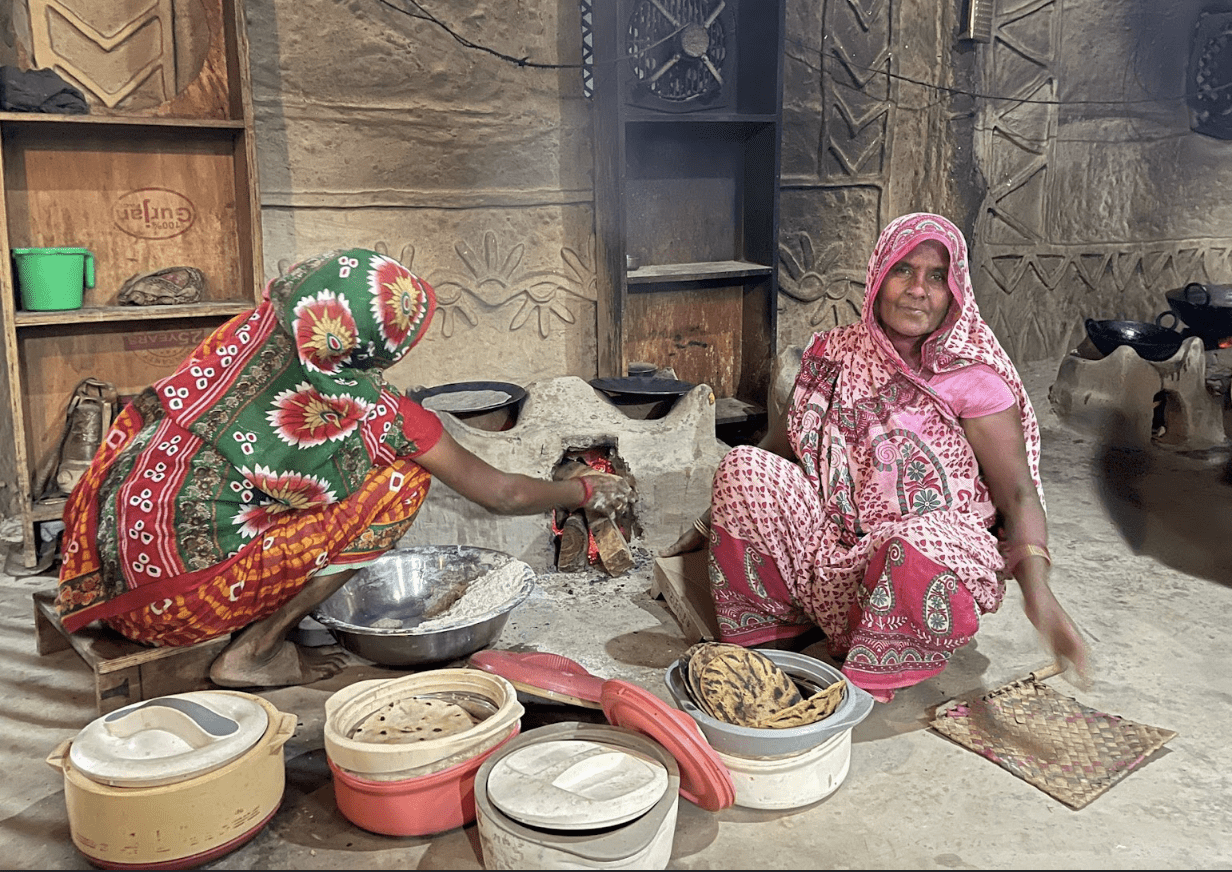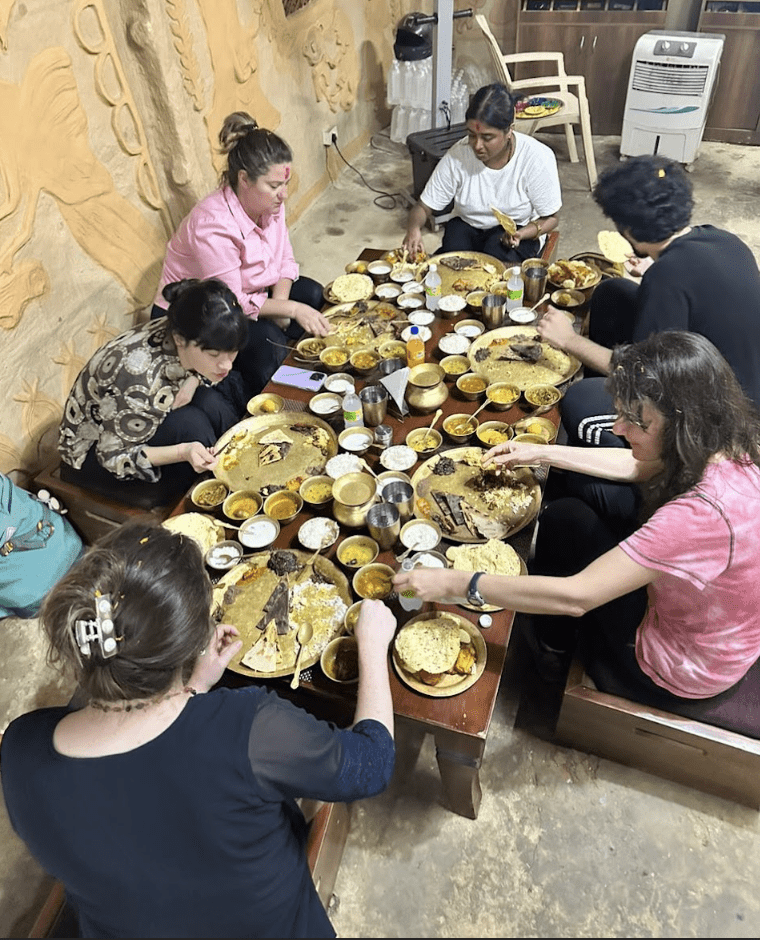Micronutrient Analysis of Traditional Indian Thali: Vegetarian vs. Non-Vegetarian
Developed by Renée Walters
 Objective: The objective of this assignment is to provide nursing students with an opportunity to calculate the macro/micronutrient content of two traditional Indian thalis: one vegetarian and one non-vegetarian. Through this exercise, students will enhance their understanding of global health, common nutrition concerns of individuals of Indian descent, importance of macro/micronutrients in the context of diverse dietary traditions, and developing mindful eating practices to promote health and maintain cultural relevance.
Objective: The objective of this assignment is to provide nursing students with an opportunity to calculate the macro/micronutrient content of two traditional Indian thalis: one vegetarian and one non-vegetarian. Through this exercise, students will enhance their understanding of global health, common nutrition concerns of individuals of Indian descent, importance of macro/micronutrients in the context of diverse dietary traditions, and developing mindful eating practices to promote health and maintain cultural relevance.
Assignment Instructions:
Reading:
Micronutrient’s deficiency in India: a systematic review and meta-analysis
What is Thali? An Inside Look at this India Dietary Tradition.
Why We Eat the Way We Do: A Call to Consider Food Culture in Public Health Initiatives
Activity: Choose one vegetarian thali and one non-vegetarian thali commonly found in Indian cuisine. Provide a detailed description of each thali, including the names of dishes included and their typical serving sizes.
Micronutrient Analysis:
1. Vegetarian Thali:
– List the ingredients of each dish in the vegetarian thali, specifying their quantities/volume and the meals overall macro and micronutrients and caloric intake.
– Using the DRI Calculator, determine the following macro and micronutrients suggested for your patient. 
- Iron
- Calcium
- Carbohydrate
- Fat
- Protein
- Vitamin C
- Vitamin A
- Vitamin B12
- Zinc
2. Non-Vegetarian Thali:
– Repeat the process for the non-vegetarian thali, including the ingredients and quantities of each dish.
– Calculate the content of the same micronutrients listed above per serving.
– Compare the micronutrient content of the vegetarian and non-vegetarian thalis.
– Discuss any significant differences or similarities observed in the micronutrient profiles of the two thalis.
– Complete a gap analysis of the desired micronutrients to the traditional thali (s).
– Summarize the key findings of the micronutrient analysis and their implications in the context of a specialty diet that is appropriate for your assigned patient (ADA, DASH, FODMAP, Low Sodium)
– Create a culturally sensitive infographic that displays nutritional alternatives to meet the recommended dietary changes for your selected patient.
– Reflect on the importance of considering micronutrient content when planning balanced meals, especially in culturally diverse contexts like Indian cuisine.
Submission Guidelines:
– Submit a comprehensive report detailing the micronutrient analysis of both the vegetarian and non-vegetarian thalis.
– Submit your nutritional education infographic.
– Ensure clarity, accuracy, appropriate health literacy, and proper referencing of sources used for nutritional data.
Assessment Criteria:
- Accuracy and thoroughness of the micronutrient analysis.
- Clarity and organization of the report.
- Critical analysis and interpretation of the findings.
- Accuracy, completeness, readability of patient recommendations
- Adherence to submission guidelines and referencing standards.
References:
https://www.youtube.com/watch?v=juRD0EdjvvM
Venkatesh U, Sharma A, Ananthan VA, Subbiah P, Durga R; CSIR Summer Research training team. Micronutrient’s deficiency in India: a systematic review and meta-analysis. J Nutr Sci. 2021 Dec 21;10:e110. doi: 10.1017/jns.2021.102. PMID: 35059191; PMCID: PMC8727714.
